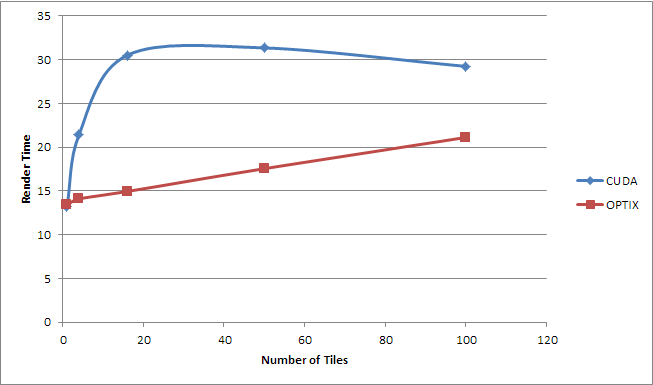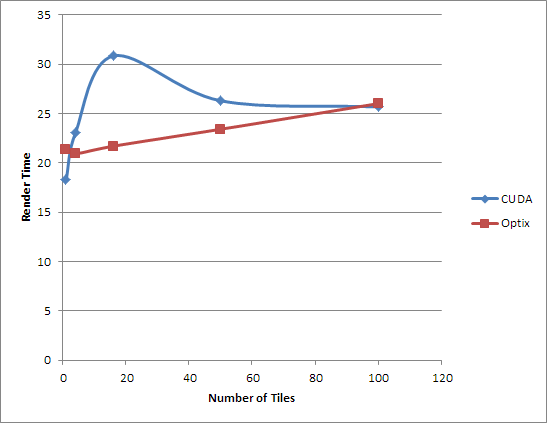I have just graphed up the results above (along with a couple more to fill in the blanks).
It appears that Optix rendering is far less impacted by reducing tile sizes than CUDA is when using adaptive sampling. The render times for Optix climb slowly and linearly as the tile size decreases, whereas using CUDA, there is a huge initial speed penalty for reducing the tile size.

When not using adaptive sampling, the data looks like this:

In conclusion - it appears that if you can render using a single tile, CUDA is probably the better option and gives the fastest overall render time. It gives slightly better render times compared to Optix whether using adaptive sampling or not.
If rendering more than one tile, then Optix conveys a huge advantage over CUDA for either normal or adaptive sampling. This advantage diminishes for large numbers of tiles, so it’s best to keep the number of tiles low. In my tests, between 8 and 16 tiles seemed to give Optix the biggest advantage over CUDA.